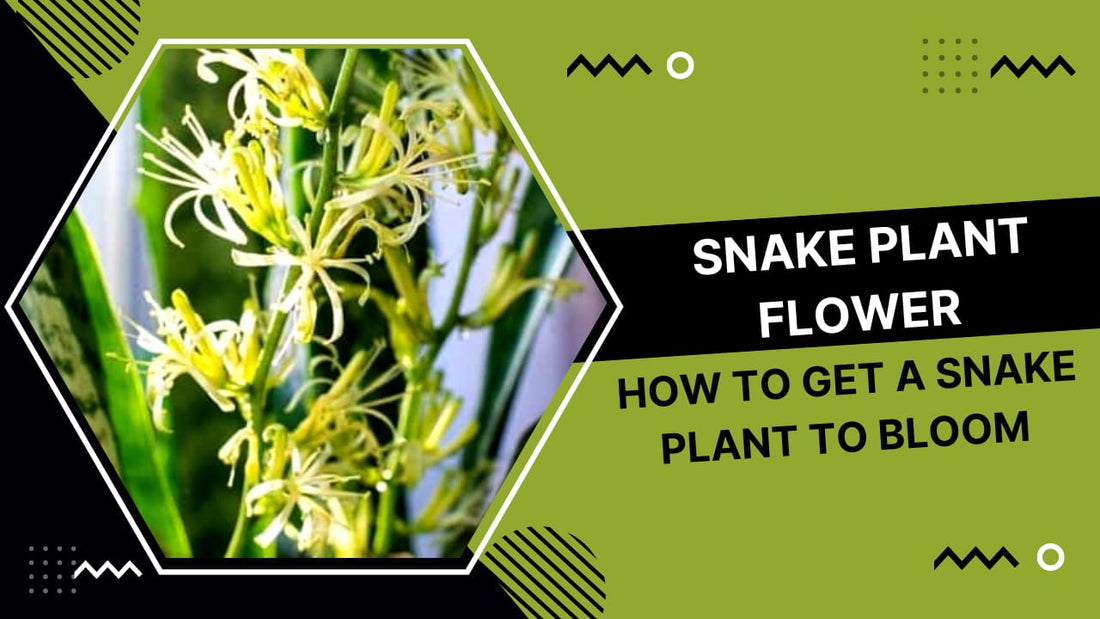Secrets to Blooming Snake Plants: Unlock Flowering Tips
Did you know that snake plants can bloom? Many plant lovers are surprised to learn that these popular houseplants can produce beautiful flowers under the right conditions. If you’re eager to make your snake plant bloom, you’re in the right place!
I remember my grandmother telling me about snake plants and their ability to bring good fortune and health to a home. But what fascinated me most was when she described how stunning they look when they bloom. With the right care and attention, you too can experience this rare and delightful sight.
Stay with me until the end as I guide you through everything you need to know about snake plant flowers, including my personal experiences and expert tips to make them bloom easily.
About Snake Plant Flowers
The snake plant, also known as mother-in-law’s tongue, is one of the most popular indoor plants worldwide. It features pointed, structured leaves with striking yellow edges or unique jagged stripes. While it is widely cherished for its resilience and beauty, what makes it truly special is its rare and enchanting flower.
Snake plant flowers are not common. You may own a snake plant for years or even decades without seeing it bloom. However, under ideal conditions, these plants can surprise you with stunning, fragrant flowers. The blooms usually grow along a tall flowering stalk that can reach up to three feet in height. These flowers are available in shades of creamy white, light green, pale yellow, or even white with hints of lavender or mauve.
One of the most remarkable aspects of snake plant flowers is their fragrance. The sweet scent becomes particularly strong at night when the flowers open up, filling the room with their delightful aroma. The plant also produces nectar, which attracts pollinators but may also invite pests.
How to Make a Snake Plant Bloom
Although snake plants are low-maintenance, getting them to bloom requires specific care and attention. Here are the key factors that influence their flowering:
1. Provide Proper Light
Light plays a crucial role in plant growth and flowering. While snake plants can thrive in low light, they prefer indirect sunlight for optimal blooming. Avoid keeping them in dark, shaded areas, as insufficient light can prevent flower production. Placing your snake plant near a bright window where it gets indirect sunlight will increase the chances of blooming.
2. Consider the Plant’s Age
The age at which a snake plant blooms is unpredictable. While young plants can produce flowers, mature plants are more likely to bloom, especially when given the right conditions. If your snake plant has not flowered yet, patience is key. Providing consistent care over the years increases its chances of blooming.
3. Water Only When Necessary
Snake plants store water in their leaves, making them highly drought-tolerant. Overwatering can lead to root rot, which can harm the plant and prevent flowering. To encourage blooming, allow the soil to dry completely between waterings. During winter, reduce watering even further.
4. Maintain the Right Temperature
As a tropical plant, snake plants prefer warm temperatures. Exposure to cold temperatures or frost can damage the plant and hinder flower production. During winter, bring your plant indoors to protect it from extreme cold. Ideally, keep the temperature around 65-85°F (18-29°C) for healthy growth and potential blooming.
5. Use Proper Fertilization
While snake plants do not require frequent fertilization, using the right fertilizer can enhance their growth and flowering potential. A phosphorus-rich fertilizer can promote blooming. However, avoid over-fertilizing, as excess nutrients can lead to imbalances and negatively impact the plant.
6. Choose the Right Pot
The size and type of pot you use can also influence flower production. Snake plants prefer slightly root-bound conditions, which can sometimes encourage blooming. However, make sure the pot has proper drainage to prevent overwatering. A well-draining pot ensures that the plant remains healthy and stress-free.
7. Use the Right Soil Mixture
The quality of the soil directly impacts the plant’s health. Snake plants thrive in a well-draining soil mix that prevents water retention. A combination of potting soil with added sand or perlite ensures proper aeration and drainage. This reduces the risk of root rot and promotes a healthy environment for the plant to bloom.
Final Thoughts
Encouraging a snake plant to bloom requires patience, but with the right care, you can witness this rare and beautiful phenomenon. By ensuring proper light, watering, temperature, fertilization, and soil conditions, you increase the chances of your snake plant producing flowers.
Remember, the nectar from snake plant flowers is sticky and aromatic, which may attract pests. Regular monitoring and maintenance can help keep your plant healthy while you enjoy its stunning blooms.
Try these tips and surprise everyone with a blooming snake plant in your home!
FAQ’s
Q1. Will the snake plant die after flowering?
Q2. Why do they flower so rarely?
You should not pressure it to bloom as it could take more than 10 years for your snake plant to blossom again, depending on the surrounding it is growing in.
Q3. Does the snake plant flower have any fragrance?
Conclusion
To summarize, did you find all the answers to your doubts that you had in your mind?
Let me take a quick recap on the factors that can help your snake plant to bloom:
- Providing enough light
- Determining the age
- Water only when it is necessary
- Maintain the temperature around
- Fertilization is also important
- Pot condition must be taken care of
- Providing proper soil mixture
That’s all my friends! Did you find this article informative? Did you observe anything that I haven’t listed here?
Feel free to drop it in the comments down below and don’t forget to share this article with your friends and family!






















